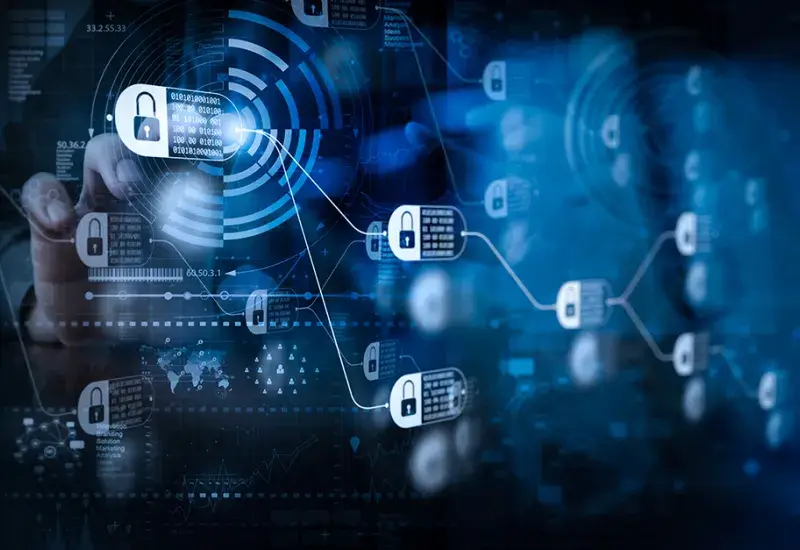Summary: How can there be a connection between Blockchain and Edge Computing, which are among the most popular topics today? So, can we use Blockchain and Edge Computing technologies together? Or what might be the advantages of using it?
Blockchain and Edge Computing
As far as we can see, when Blockchain is mentioned, it is generally perceived as a coin or cryptocurrency. What do you think of this situation? Also, how could it be related to Edge Computing?
Yes, when Blockchain is mentioned, the first thing that comes to mind is digital currency or cryptocurrencies, but Blockchain technology is much more than these. Cryptocurrency is digital money itself, and blockchain is the medium through which this digital money is exchanged. In a very simple explanation, we can define blockchain as a digital record divided into pieces called “blocks” that are stored in multiple locations, essentially enabling secure, accurate and fast record keeping.
Of course, the usefulness of blockchain does not end with digital currencies. Cryptocurrencies only represent the beginning of blockchain's true potential. There are many non-cryptocurrency applications for blockchain currently being implemented, and as more people become aware of this technology, there will be countless applications that can be developed.
Edge Computing has emerged with the proliferation of internet of things (IoT) devices, at a time when existing network architectures are struggling to cope with the increase in the amount of data produced, processed and distributed. Thanks to the use of distributed cloud computing structures over resources on edge networks to access data in a faster, safer and optimized way, devices or systems located close to each other can exchange data with each other to improve real-time applications such as data processing, machine learning and augmented/virtual reality. network efficiency and scalability are facilitated.
In this way, the sensor data of the subsystems is processed at the closest point (edge node) and the main servers are always connected with low latency and there is no interruption or congestion affecting the rest of the network.
Edge Computing greatly increases the scalability of existing infrastructure. A near future can be envisioned where businesses or institutions run their own compact data centre, greatly reducing the load on main data centres and neutralizing the threat of a single point of failure.
So, can we use Blockchain and Edge Computing technologies together? Or what might be the advantages of using it?
The combined use of Edge Computing and blockchain technologies has long been the goal of many developers. The ability to track the movements of digital or physical assets across distributed structures will eliminate many of the vulnerabilities seen in supply chains today.
To elaborate, since both blockchain and edge computing develop on the concept of distributed network, working together can create a stronger impact. In particular, edge computing often includes powerful graphics processing units, which can provide the resource requirement that can help speed up blockchain transactions. IoT devices that do not have sufficient resources for blockchain transactions can more easily meet the resource demands required for transactions by taking advantage of edge computing resources.
Of course, to implement these properly, another problem needs to be addressed: connecting components in the physical world (e.g. IoT devices such as GPS trackers, smartphones, sensors) to a blockchain, feeding data, using alternative networks for cases where the connection is weak or unavailable, or There will be a need to develop smart contracts on a structural and legal level to enable off-chain transactions.
In summary, Edge Computing is vital for scaling existing networks and for more effective use of smart devices and IoT systems that need high performance. As new technologies advance, they will reveal potential applications for data systems in different sectors and may become one of the most important developments in the coming years.
What are examples of blockchain and edge computing benefits?
Many different application areas can be designed in this regard, ranging from public services such as smart urbanism and e-government to private sector applications, such as health, transportation, energy, finance and defence. To give a few examples:
- Industrial blockchain IoT applications can help create smart grids and efficient energy management through dynamic pricing in smart cities using smart contracts that enable the automation of transactions between systems and end users.
- It can help mobile service providers and mobile operations to carry out calls and number forwarding operations faster and more securely with user license agreements.
- Platforms where users' health information is processed securely through IoT devices that use blockchain effectively and use wearable technologies can help detect diseases faster through machine learning algorithms. For example, it can be used for early diabetes detection.
- It can help reduce communication complexity with inscription, which simultaneously performs both digital signature and encryption functions for IoT devices. It can be used effectively in applications such as authentication, security and authorization transactions.
- Blockchain mechanisms can help prevent hacking and protect critical devices such as virtual circuit-based managed drones through cloud platforms
Halit İnce
IT Program Manager
IT Business Development and Marketing Directorate

